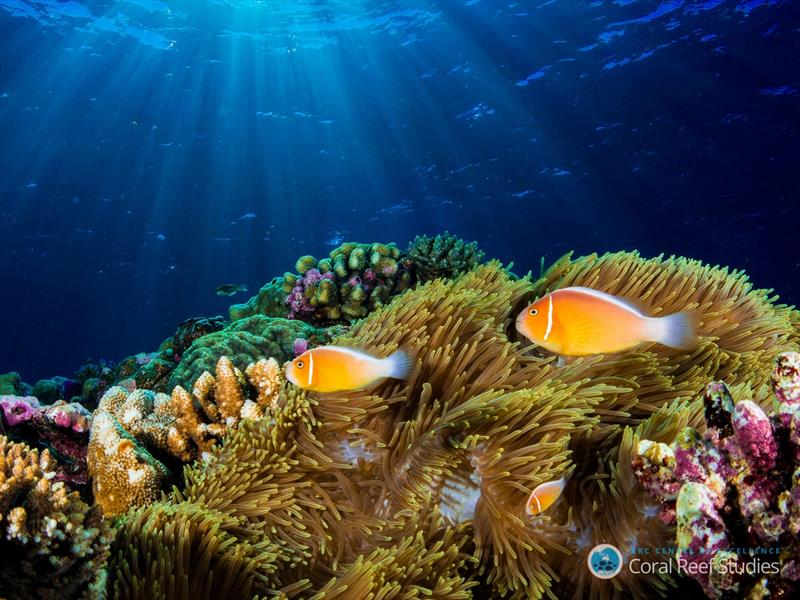
Half a trillion corals: World-first coral count prompts rethink of extinction risks
by ARC Centre of Excellence for Coral Reef Studies 3 Mar 2021 09:34 UTC

The world-first study measured around half a trillion corals in the Pacific © David Williamson
For the first time, scientists have assessed how many corals there are in the Pacific Ocean—and evaluated their risk of extinction.
While the answer to "how many coral species are there?" is 'Googleable', until now scientists didn't know how many individual coral colonies there are in the world.
"In the Pacific, we estimate there are roughly half a trillion corals," said the study lead author, Dr Andy Dietzel from the ARC Centre of Excellence for Coral Reef Studies at James Cook University (Coral CoE at JCU).
"This is about the same number of trees in the Amazon, or birds in the world."
The results are crucial for the research and conservation of corals and coral reefs as they decline across the world due to the effects of climate change.
"We need to know the abundance of a species to assess its risk of extinction," Dr Dietzel said. "However, there is very little data on most of Earth's wild animal and plant species—not just corals."
Dr Dietzel said the eight most common coral species in the region each have a population size greater than the 7.8 billion people on Earth.
The findings suggest that while a local loss of coral can be devastating to coral reefs, the global extinction risk of most coral species is lower than previously estimated.
Extinctions could instead unfold over a much longer timeframe because of the broad geographic ranges and huge population sizes of many coral species.
Co-author Professor Sean Connolly, from Coral CoE at JCU and the Smithsonian Tropical Research Institute, said the study's new analysis of the 80 species considered by the IUCN to have an elevated extinction risk shows that 12 of those species have estimated population sizes of more than one billion colonies.
"As an example, the finger-coral, Porites nigrescens, ranks amongst the ten most abundant species we examined. It's also not considered to be highly susceptible to coral bleaching—yet it is currently listed by IUCN as vulnerable to global extinction," Prof Connolly said.
Co-author Professor Michael Bode from Coral CoE at JCU and the Queensland University of Technology said, "One third of the rarest species in our analysis—covering the bottom ten percent of species abundances—are nonetheless listed by the IUCN as being of Least Concern."
The study measured the population sizes of more than 300 individual coral species on reefs across the Pacific Ocean, from Indonesia to French Polynesia. The scientists used a combination of coral reef habitat maps and counts of coral colonies to estimate species abundances.
Co-author Professor Terry Hughes from Coral CoE at JCU said the study results have major implications for managing and restoring coral reefs.
"We counted an average of 30 corals per square metre of reef habitat. This translates into tens of billions of corals on the Great Barrier Reef—even after recent losses from climate extremes," Prof Hughes said.
"Coral restoration is not the solution to climate change. You would have to grow about 250 million adult corals to increase coral cover on the Great Barrier Reef by just one percent."
He said the study highlights the opportunity for action to mitigate the threats to reef species—and well before climate change causes global extinctions—to make an eventual recovery of reef coral assemblages possible.
"The challenge now is to protect wild populations of corals, because we could never replace more than a tiny percentage of them. Prevention is better than cure," Prof Hughes said.
"Given the huge size of these coral populations, it is very unlikely that they face imminent extinction. There is still time to protect them from anthropogenic heating, but only if we act quickly on reducing greenhouse gas emissions."
Paper
Dietzel A, Bode M, Connolly S, Hughes T. (2021). 'The population sizes and global extinction risk of reef-building coral species at biogeographic scales'. Nature Ecology & Evolution. DOI: 10.1038/s41559-021-01393-4